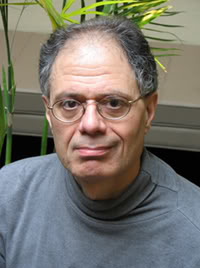In the stock market of ideas, the share price of psychoanalysis is at an all-time low. Insurers won’t pay for it, so patients can’t afford it, so doctors and therapists aren’t being trained in it. Drugs are now overwhelmingly the treatment of choice for emotional problems, sometimes combined with short-term, behavior-oriented counseling. And the difficulties are not only practical: in recent years a number of influential critiques have denied the scientific status of psychoanalysis and impugned Freud’s intellectual honesty. Literary and cultural theorists frequently make use of Freud for their esoteric purposes; but among serious people, alleges Frederick Crews, one of Freud’s leading critics, psychoanalysis is the “intellectual equivalent of a cargo cult” and no more respectable than astrology.
This is a drastic reversal. When Freud died in 1939, his ideas seemed all-conquering. That year W. H. Auden wrote in his great elegy, “In Memory of Sigmund Freud”: “To us he is no more a person/now but a whole climate of opinion.” In 1947 Lionel Trilling called Freud’s thought “the only systematic account of the human mind which, in point of subtlety and complexity, of interest and tragic power, deserves to stand beside the chaotic mass of psychological insights that literature has accumulated through the centuries.” Freud’s reputation may now be under a cloud, but no one doubts that Auden and Trilling possessed two of the most astute minds of the 20th century. Could they – and most other intellectuals, except for a few positivists and Popperians – have been utterly mistaken? And if so, why? There is a mystery here.
“Secrets of the Soul” does not probe this mystery. It is not an inquiry into the validity of Freud’s ideas but a history of their origins, influence, and evolution. What was Freud’s fundamental discovery? In Zaretsky’s words: that each of us “has an inner world that is, in good part, not only unconscious but repressed” and that all our “relations with others, especially [intimate] ones, are permeated by the images and wishes of this unconscious world.”
Was this discovery really so momentous? Surely it’s always been obvious that no one is conscious at a given moment of all that he or she knows. Yes, but repression is different from forgetting. What is repressed does not merely slip temporarily out of consciousness, to be retrieved at need; it is kept out, because full awareness of it would be too painful. For that very reason, however – that it is important enough to occasion intolerable grief or embarrassment – the repressed wish or memory continually affects one’s thinking, feeling, and behavior, distorting them into self-defeating patterns called neuroses. The aim of analysis is to help us face up to these repressed memories and wishes, after which their covert influence will cease.
This sounds so benign and reasonable – who could object? But our earliest repressed wishes turned out to be extremely naughty, indeed unmentionable. Turn-of-the-century Vienna was not ready to hear about infant sexuality. Even more unfortunate, perhaps, Freud and most of his early disciples were Jews. For both reasons, the new ideas were not officially respectable in anti-Semitic central Europe or Catholic southern Europe. In fact, as Zaretsky points out, association with Jewishness played an important role in the fortunes of psychoanalysis, bringing it into fruitful contact with modernism’s artistic and intellectual avant-garde and keeping it from possibly premature assimilation into the medical establishment.
Zaretsky is also perceptive about the complicated mutual influence of psychoanalysis and feminism. In the early 20th century, women were increasingly drawn into economic and political life, thanks partly to the efforts of suffragist movements and partly to new technologies like birth control, labor-saving domestic appliances, and office machines. Zaretsky argues, plausibly enough, that this made personal and family life, for the first time in history, a distinctive problem. Though Freud’s initial hypothesis of penis envy seemed to imply female inferiority, a more durable psychoanalytic tenet – the bisexual character of every human psyche – illuminated the fundamental commonality of men and women. In any case, the many women who trained as analysts from the 1920s on by no means accepted second-class status, and many of the leading figures in the second generation of analysts were women, including Melanie Klein, Helene Deutsch, Karen Horney, Joan Riviere, and Anna Freud.
The United States has figured largely in the history of psychoanalysis. Even before Nazism, analysts were relocating to the comparatively prosperous and unprejudiced USA. But here analysis became part of institutional medicine to a far greater extent than in Europe. The result was theoretical and therapeutic conservatism. In America, analysts prescribed “maturity” and “adjustment” (especially to women); while in Europe, the Frankfurt School produced brilliant critiques of mass culture, Melanie Klein and her English disciples developed the “object relations” theory that has come to dominate analysis, and Jacques Lacan persuaded all of Freudian France that the unconscious is a language riddled with “ellipses, redundancy, syncopation, rhetorical tropes, and metaphor.”
It is in the United States, nonetheless, that the most important psychoanalytically-informed works of social and cultural criticism since World War II have appeared. “Life Against Death: The Psychoanalytic Meaning of History” (1959), in which the mild-mannered classics professor Norman O. Brown learnedly explicated money as symbolic excrement, among many other interpretive outrages, may have been the most intellectually adventurous book written during the (allegedly) staid 1950s. Herbert Marcuse’s “Eros and Civilization” (1962), with its notion that class societies required “surplus repression,” over and above that required merely to make social life possible, had enormous influence among the international left in the 1960s. In a series of books, including “Haven in a Heartless World” and “The Culture of Narcissism,” Christopher Lasch detailed the psychic consequences of mass production and political centralization, arguing persuasively that they put the survival of democracy in question.
The legacy of psychoanalysis is not easy to assess. “Secrets of the Soul” is a welcome guide through the labyrinth.
[END]
